The Pink House
January – February 2016
Serving up history with a slice of cheese.
BY REBECCA BROWN
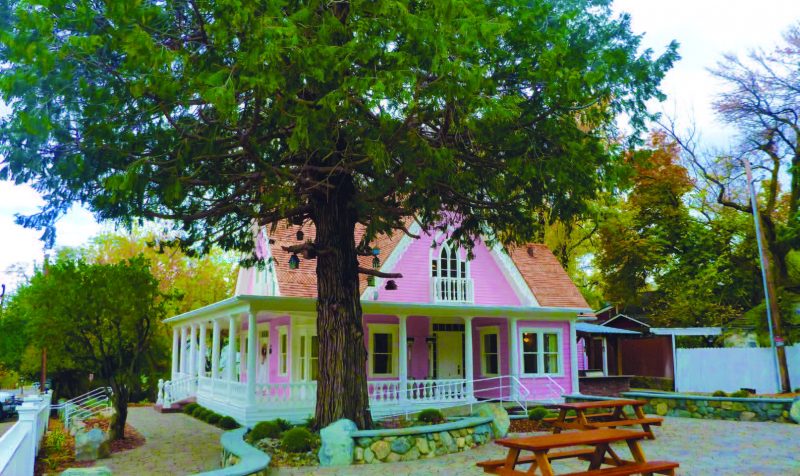
Nestled in the small northern Nevada town of Genoa is an unmistakable landmark steeped in history—The Pink House. This beautifully restored building turned cheese-and- charcuterie shop invites further exploration.
Expecting to find the typical counters and cases, I’m pleasantly surprised to walk into a space that is at once homey, cozy, and old-fashioned. The Pink House’s owner, Lois Wray, is happy to sit down and share some history and a cup of delectably creamy butternut squash soup with me. Her passion for The Pink House and its history are apparent as she shares stories from the house’s colorful past and its lengthy renovation process.
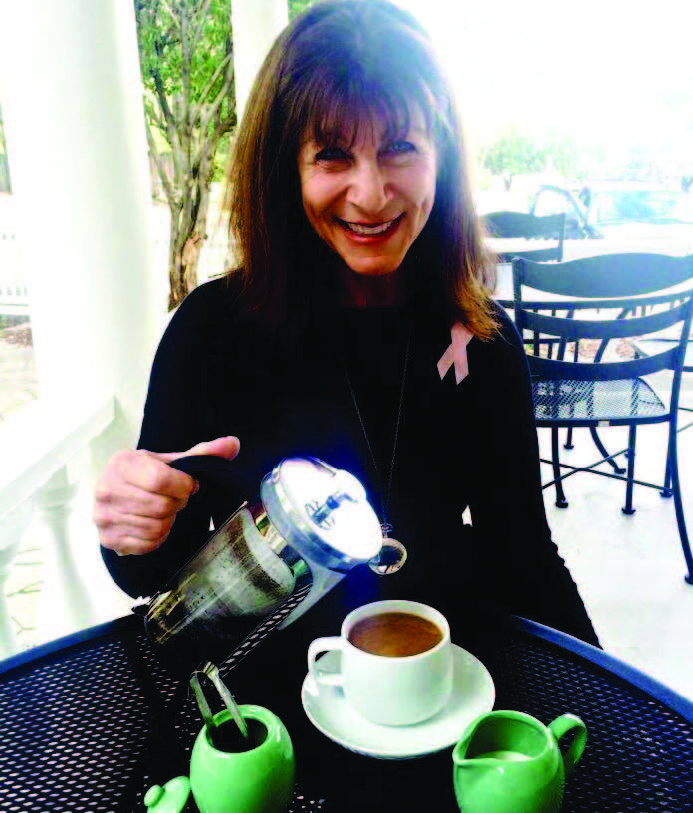
Four and a half years ago, Lois and her husband, Dan, moved to Genoa from San Diego. She saw the house and envisioned someone restoring it to its Gothic Revival roots. An idea was born, and that someone became Lois, with the intention “to honor its original integrity and do right by the Pink House.”
As I savor my soup, I look around the rooms and see the love and meticulous attention to detail that went into the restoration, right down to the tabletops made from reclaimed wood from the original house.
A COLORFUL HISTORY
The Pink House was built in 1855 and was one of the first homes in the settlement of Genoa—but it wasn’t always pink. It was originally painted white and located just up the street. Oxen pulled the house on rolling logs to its current resting place in 1870, the same year it was painted pink by the Johnson family.
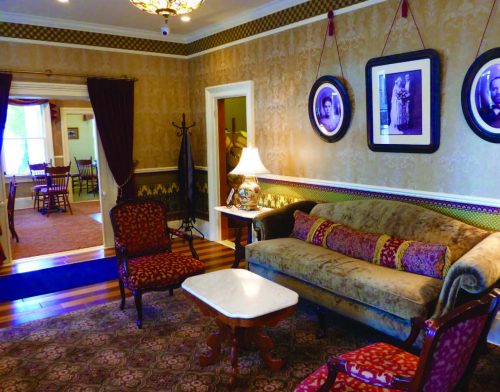 Several prominent families including the Reese, Johnson, and Virgin families have lived in the Pink House. It’s biggest claim to fame may be that Lillian Finnegan grew up in the house and went on to found the Candy Dance to raise money for the town’s streetlights. The annual tradition has continued every year since 1919.
Several prominent families including the Reese, Johnson, and Virgin families have lived in the Pink House. It’s biggest claim to fame may be that Lillian Finnegan grew up in the house and went on to found the Candy Dance to raise money for the town’s streetlights. The annual tradition has continued every year since 1919.
Lois’ eyes sparkle as she shares the history of the home and its prior inhabitants. She says the bulk of the documents establishing Nevada as a state were either drafted or signed in the very place where patrons are now sampling cured meats and cheeses. “I knew what I was getting into with the renovation process,” Lois says. “There were no negative surprises, but a lot of pleasant surprises.”
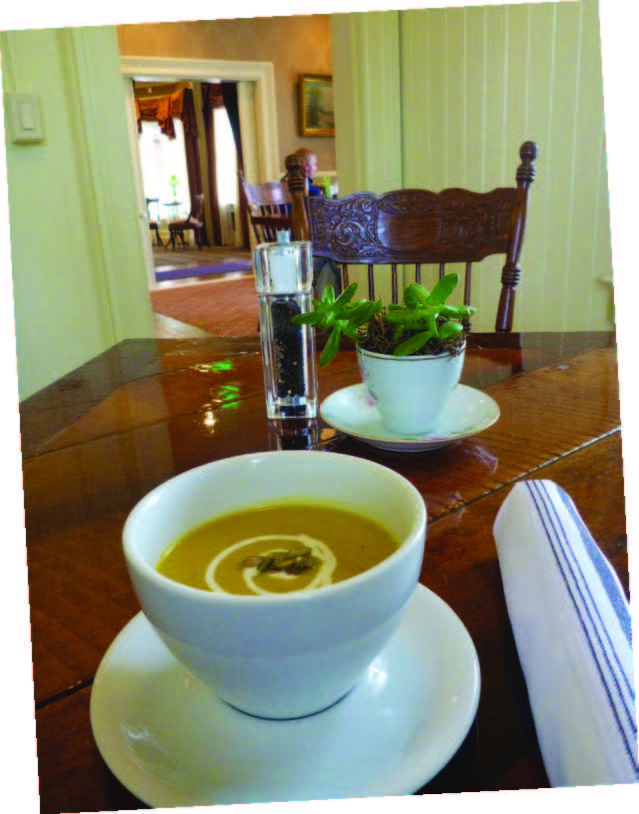 At 160 years old, the house is still structurally sound. All of the
At 160 years old, the house is still structurally sound. All of the
doorframes, windows, and the doors are original. Probably the biggest pleasant surprise was discovering the original roof hidden underneath the existing roof. Others included finding newspapers dating back as late as the 1800s in the walls, and a $5 IOU from Judge Vir- gin’s son for a hackney ride from Reno to Genoa. Also found in the house were letters, stamps, a playbill, old spoons, and a bottle of Henley’s Eyeopener, an elixir.
CHEESE AND CHARCUTERIE IN GENOA?
The Pink House offers the area something different with its high-quality healthy foods and shared plates.
“I wanted to enhance all of the good things that are going on in this historical district while not being in competition,” Lois says. “I tried to stay local with everything that I did here at The Pink House and the one thing I was striking out on was finding a cheesemonger that would be able to do the things that I needed.” She found her cheesemonger, Casey Sebahar, through an ad placed in the American Cheese Society’s magazine. Speaking with Casey, you can’t help but get excited about cheese. He puts a lot of thought into the vetting process for the cheese he selects.
“I try to source from smaller producers with high-quality milk… people who really know their animals and know their craft, rather than big, industrial-made cheeses,” Casey says. 
All cheese and meats at The Pink House are sliced to order. Behind the cheese counter you will find variety in the cheese and the types of milk used, as well as a broad spectrum of flavors and countries represented.
“I want to focus more on different American cheeses because that’s kind of a new and exciting thing happening in the last decade or so with a lot more good American producers.” Casey explains.
For the charcuterie, Casey again offers variety with prosciutto, salami, and pates all gracing the meat counter. He maintains a focus on American producers—50 percent of the cured meats and cheeses are from the U.S.—as well as European favorites.
Casey plates a combination of manchego from Spain, Stilton from England, goat Gouda from Paso Robles, Calif., and Taleggio from Italy for me to try. The presentation is beautiful and includes a fresh baguette and quince jam from Happy Girl Kitchen in Monterey, Calif. The variety of tastes and textures are wonderful.
“The Pink House really is a unique place. I think just being in this building is really special. Even if you are not a cheese person it’s a fun place to visit and a fun place to hang out,” Casey says.
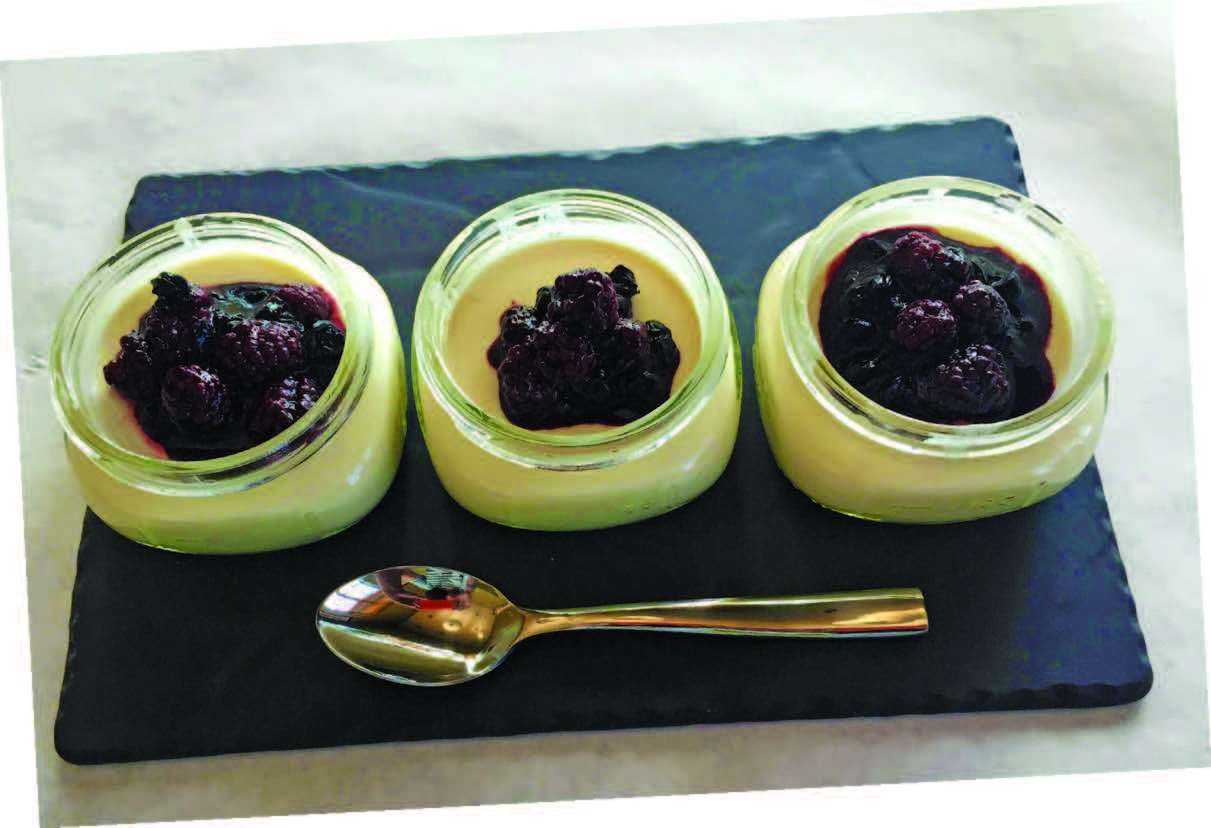
LOCAL CHEF MIXES IT UP
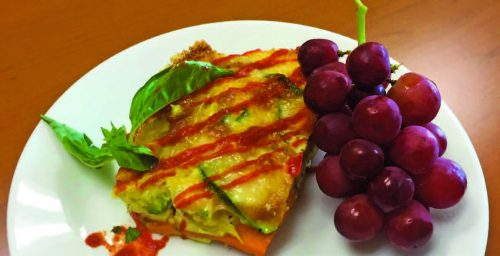 While The Pink House is first and foremost a cheese and charcuterie, a seasonal menu of small plates, salads, and sandwiches seeks to introduce people to healthier eating habits while letting the flavor of the food speak for itself. A glance at the menu had me salivating for the cheese & mac small plate and lemon pannacotta. Chef Jeanne Whited is from Gardnerville, and she likes to be creative with her menu. Her made-from-scratch roasted butternut squash soup is one of the creamiest I’ve ever tasted. There is a daily soup and a daily salad special, but sandwiches like The Judge—a combination of soppressata, coppa, mortadella, roasted red pepper, olive tapenade, and provolone on a baguette—are anything but routine.
While The Pink House is first and foremost a cheese and charcuterie, a seasonal menu of small plates, salads, and sandwiches seeks to introduce people to healthier eating habits while letting the flavor of the food speak for itself. A glance at the menu had me salivating for the cheese & mac small plate and lemon pannacotta. Chef Jeanne Whited is from Gardnerville, and she likes to be creative with her menu. Her made-from-scratch roasted butternut squash soup is one of the creamiest I’ve ever tasted. There is a daily soup and a daily salad special, but sandwiches like The Judge—a combination of soppressata, coppa, mortadella, roasted red pepper, olive tapenade, and provolone on a baguette—are anything but routine.
As I leave The Pink House, Lois’ words echo in my mind: “What was important to me was first honoring the integrity of the house and then secondly, doing something that was complimentary to the community.”
Lois has done both, and with style, grace, and a fair amount of good old-fashioned hospitality.
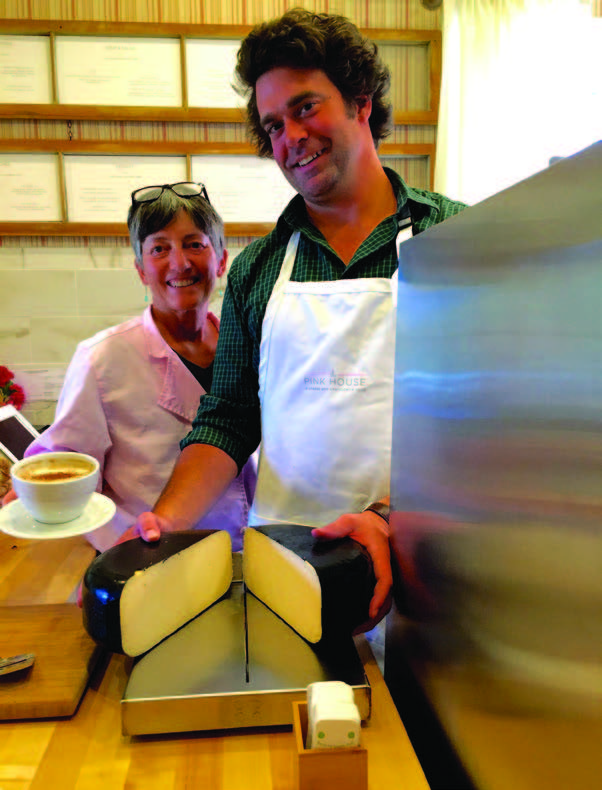
Cheesy facts from Cheesemonger Casey Sebahar
• Raw milk cheeses in the United States must be aged for at least 60 days.
• The orange color in many cheeses is a vegetable dye called annatto. It is often added to make light-colored cheeses more attractive.
• Most hard, more-aged cheeses have very little lactose, so a lactose-intolerant person can often eat cheeses like Parmigiano-Reggiano or aged cheddar.
• The strong smell of many soft washed-rind cheeses comes from Brevibacterium Linens, the same bacteria that causes foot odors.
• Cheese can be made from the milk of all kinds of mammals, including camels, yaks, reindeer, donkeys, and even moose.
• The American Cheese Society holds a competition every year for the best American cheeses.
• The Cheesemonger Invitational takes place twice a year and crowns the top cheesemonger.
TAKE A TASTE
The Pink House
193 Genoa Lane
Genoa, NV 89411
thepinkhousegenoa.com, 775-392-4279


